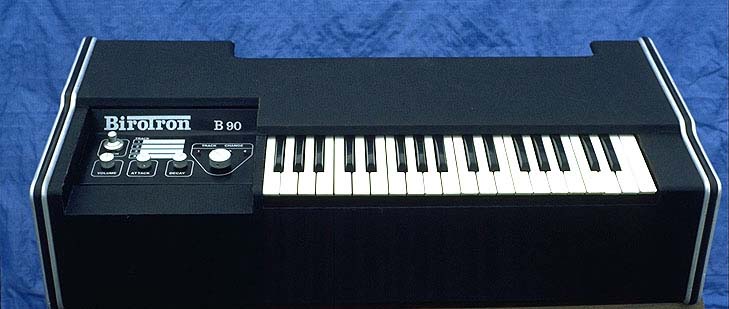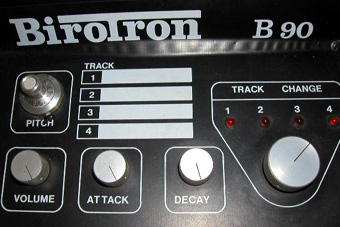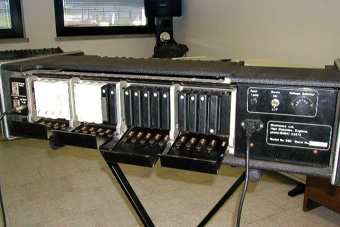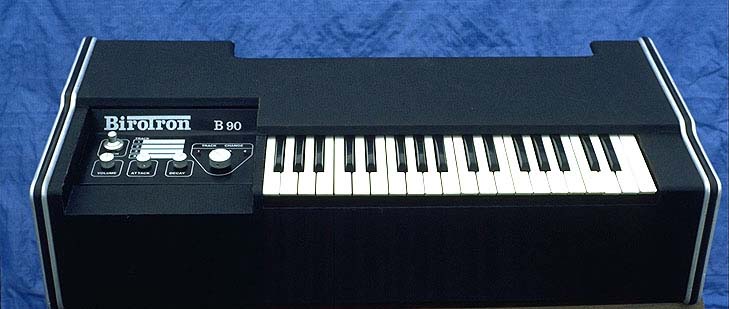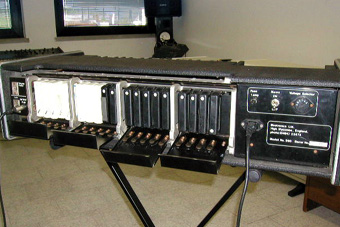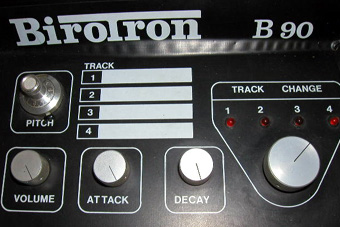Description | The major innovation of the Birotron is that it stores its sounds using 8-track tape loops, which allows it to play the sounds indefinitely, a great improvement from the 8-second limit of the Mellotron and Chamberlin. This also allows for dynamic and gradual changes in sound tones over time. A 10-minute tape loop could start off as a violin sound and gradually thicken into a viola or cello. A single repeating drum sound could gradually morph into several drum tones. Sound effects could change over time from the sounds of a stream to birds chirping. Sound collages could be made by combining tapes of various flutes, cellos, choirs, sound effects etc. This use of tape loops from 8-track cartridges also allows a Birotron owner to record his own tapes, and have a series of multiple instruments across the keyboard in the register they wished.
Another improvement is a separate attack and decay envelope for each note (like a VCA on analogue synthesizers) that allowed each note on the keyboard to independently begin and sustain. Notes could come in instantly or gradually over time — swelling in volume over a minute. Notes could decay quickly or slowly fade out, or infinite sustain could be achieved – giving the illusion that the instrument is playing itself. A ten turn pitch knob allows the sounds to be vastly speeded up or slowed down. The drawback was that the actual attack of a note had been lost in this system, and the electronic attack and decay were essential to recreate it.
The attack, sustain, and 10 turn pitch features allow for effortless creation of ominous stacked sound swells and pitch bends reminiscent of Mike Pinder's Mellotron work on "Have You Heard" (1969), and Rick Wakeman's Mellotron work on "I Get Up, I Get Down" from Close to the Edge (1972). By varying the attack and decay controls while playing — sounds, notes, and chords could be stacked upon, blended, sustained, and then suddenly morphed by changing the 4 position track selector. The keyboard action also allows the user to play as fast as they want to, having a very light touch. This allowed the player to create both a dynamic sound, and do fast runs the way a symphony might actually play. This was not always easy to do with the Mellotron or Chamberlin. These combined features plus a lighter weight and small size attracted huge interest from most major musicians of that time. |
